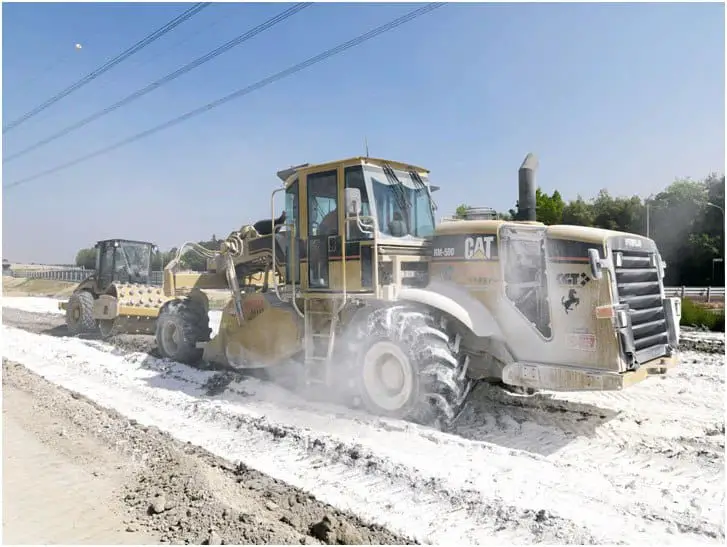Lime stabilization is not effective for sandy soils. However these soils can be stabilized with clay, fly ash etc which serve as hydraulically reactive ingredients. The ratio of fly ash to lime generally varies in between 3 to 5. The fly ash is used is about 10 to 20% of the soil weight.

Factors Affecting Lime Stabilization
The following factors affect lime stabilization process.
- Type of soil: Lime stabilization is useful for stabilization of clayey soils but it is not effective for sandy soils.
- Amount of lime: The amount of lime requires for stabilization varies between 2 to 10% of the soil.
- Ratio of fly ash to lime: The ratio of fly ash to lime generally varies in between 3 to 5. The fly ash used is about 10 to 20% of the soil weight.
- Different type of lime: The quick lime is more effective but for safety and convenience to handle the hydrated lime is generally used.
- Soil becomes more workable.
- Strength is generally improved.
- Lime stabilization increases the compressive strength sometimes as high as 60 times.
- It is effective for soils.
- Lime is produced by burning of lime stone in kilns, so that it is harmful for environment.
- It needs more cost to burnt lime stone.
- It is not effective for sandy soils.
- There is limited percentage of amount of lime required about 2 to 10% of the soil.
Advantages of Lime Stabilization
Some advantages of lime soil stabilization is shown below.
- Soil becomes more workable.
- Strength is generally improved.
- Lime stabilization increases the compressive strength sometimes as high as 60 times.
- It is effective for soils.
Disadvantages of Lime Stabilization
Lime stabilization has also some disadvantages. The disadvantages of lime stabilization includes the following.
- Lime is produced by burning of lime stone in kilns, so that it is harmful for environment.
- It needs more cost to burnt lime stone.
- It is not effective for sandy soils.
- There is limited percentage of amount of lime required about 2 to 10% of the soil.
